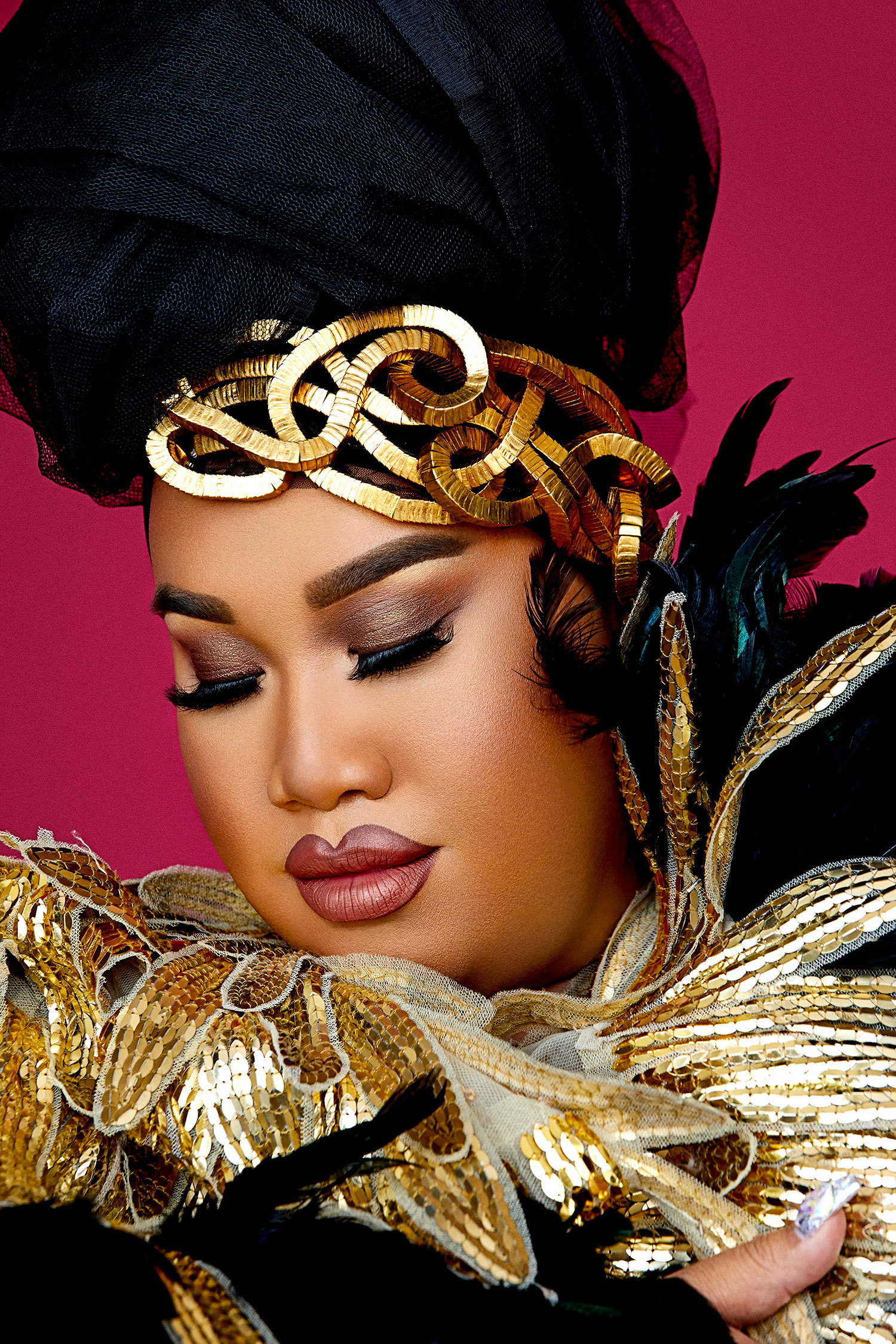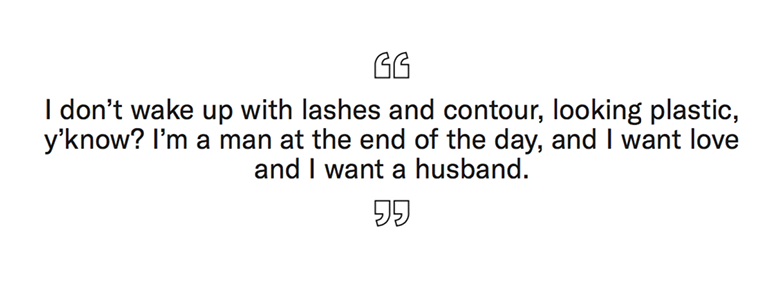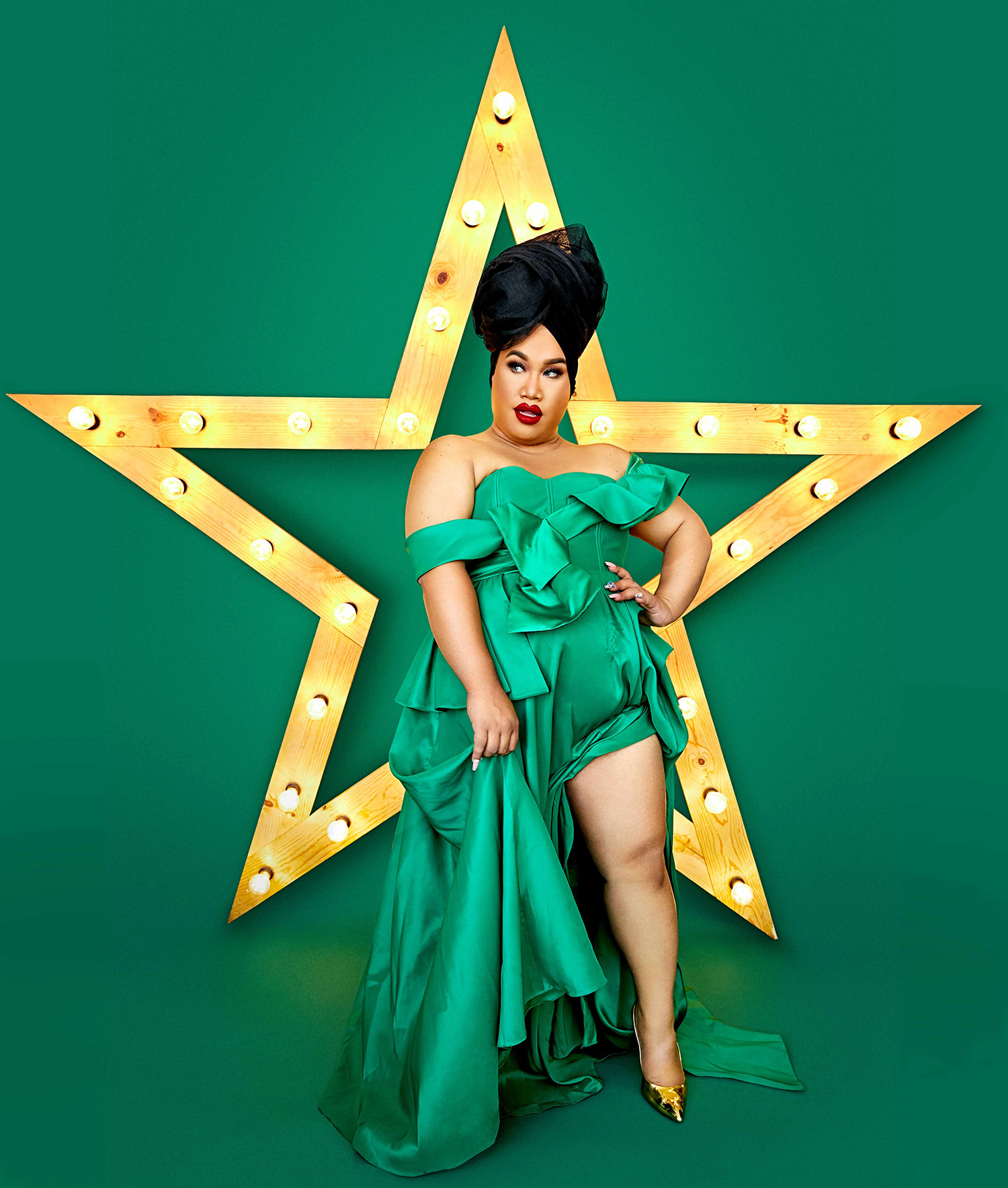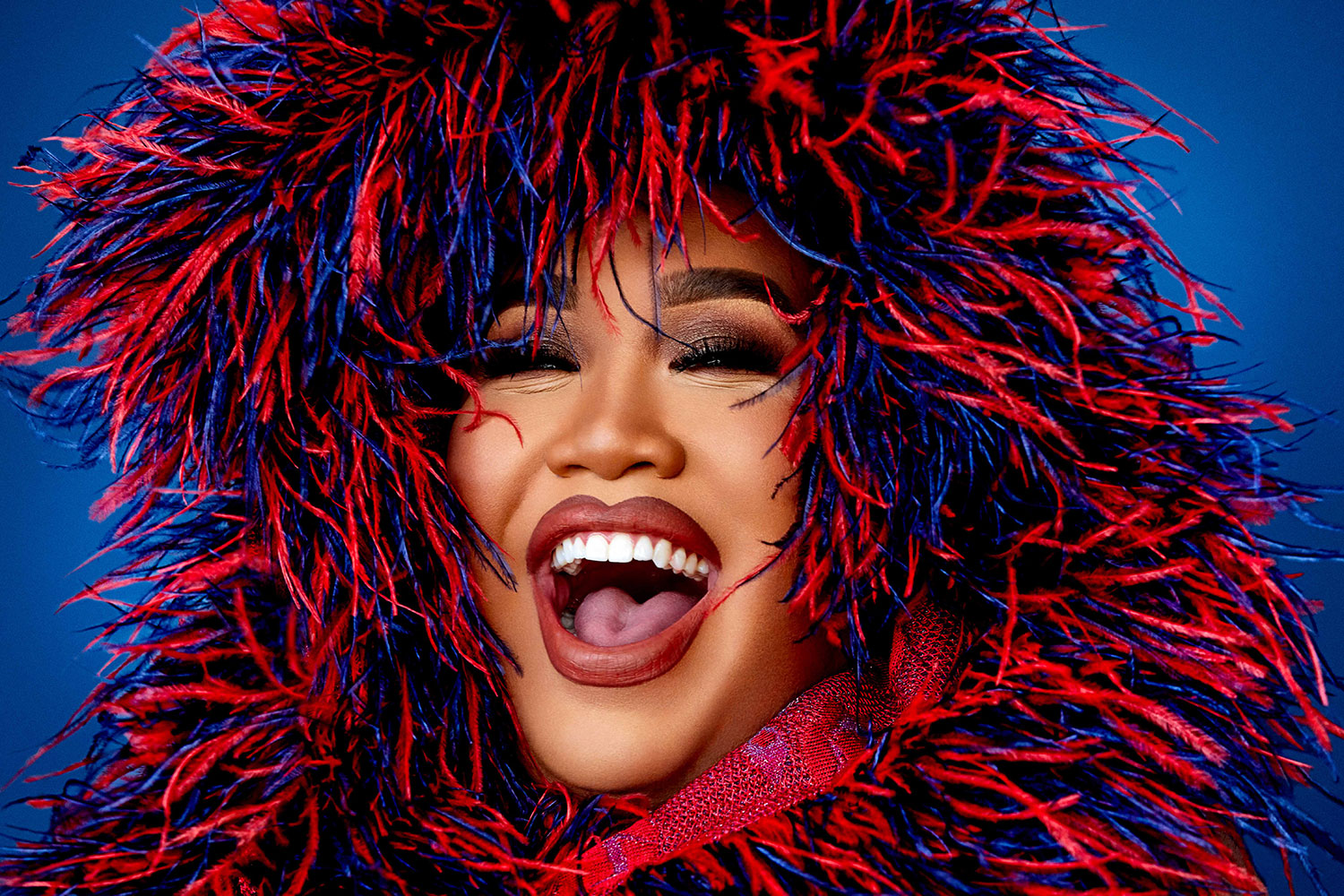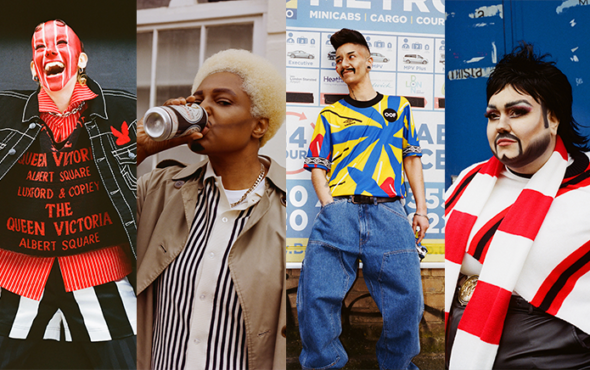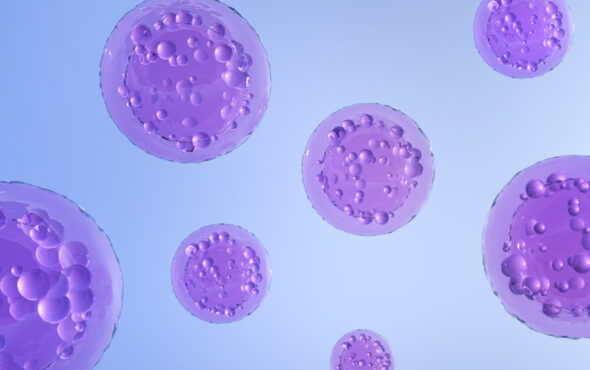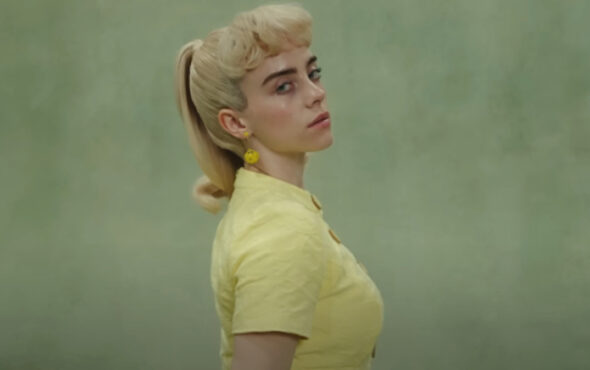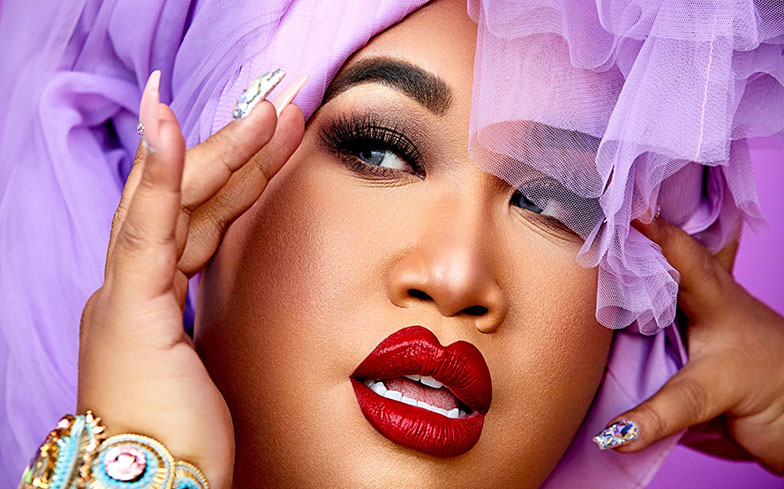
“I may be a big girl, but a big girl can move, honey! One leg at a time,” Patrick Starrr laughs as he recalls filming the music video for his debut single Got The Glam.
The surprise release saw him serve lewks for days, a face beat for the gods (as always), and even some sickening vogue-inspired choreography – and don’t even get us started on his fierce followup single Don’t. “A lot of people don’t know that I’m very much a business and marketing-savvy person,” he says, “so for Diva Feva, which was my third collection with MAC Cosmetics, I didn’t want The Kids – that’s what I call my subscribers – to be bored, y’know? I was like, ‘Let me’ – dare I say it – ‘shit on these kids. Let me put some creative juices out and let them be floored. Let me just drop this thing out of nowhere.’ That was my marketing strategy, to have fun and do something Patrick Starrr has never done before.”
Makeup tutorials with A-list celebrities, collaborations with one of the biggest beauty brands in the world, and a series of glamorous music videos; it may look effortless now, but it’s taken hard work and plenty of dedication to get here. Patrick first discovered his passion for makeup when he was just 15 years old, a natural progression from a love of makeover and fashion shows like The Swan and America’s Next Top Model. “I was really inspired by that first generation of makeover shows,” he recalls, “they would always use makeup, and that’s when I really fell in love with it.”
But like many young queer people discovering hobbies and interests outside of gender norms, Patrick initially kept his newfound love of makeup a secret from his parents. “Of course I hid it,” he confesses. “I would steal what was in my mom’s makeup drawer and just play with makeup whenever I could.” His parents are his biggest supporters now – they even appeared in his Don’t music video – but they were initially unsure what to think of their son wearing makeup. “They didn’t understand,” he says. “I started wearing makeup because I wanted to know how products worked on me. I was frustrated that I didn’t know how makeup felt or what the experience was when it came to my skin type or texture, so that’s when I started wearing it, and my parents were so confused. My reasoning to my parents for wearing makeup was to tell them, ‘Hey, I’m wearing it because it’s a job and I can make money from this’.”
Patrick first found fame through YouTube, like many social media influencers from his generation. What started with a simple, low-budget morning makeup routine video back in 2013 has rapidly transformed into a business for the gifted individual, with over 4 million subscribers and 250 million video views racked up on the platform. But it wasn’t intentional, as he was initially just looking for an outlet for his creativity, and hoping to spread that positivity to others. “When I started YouTube it wasn’t to have followers or anything, it was because a lot of my friends told me to start a channel,” he says. “It wasn’t for me, it was more for the people who don’t have the means to do it, or the confidence, or the proper support to do so. When I see people who find refuge in my channel, that speaks more to me, because the makeup comes off at the end of the day.”
It wasn’t until brands started reaching out to him to collaborate that he realised being a figurehead for the male makeup community could be a legitimate career path. But being a trailblazer comes with inevitable backlash, and the YouTube comments section has a notoriously poor reputation for bringing out the worst in bigoted viewers.
“Oh my God, I get thousands of nasty comments every day,” Patrick says, seemingly unbothered. “But for me to be able to control what people see and filter that hate out, I’m able to create a positive space for people to come into. So yeah, I do get thousands of nasty comments, but they’re filtered, and they go straight into the trash bin. So let’s say a 10 year old watches my videos and they want to look for hateful comments, they’re not gonna find them on my page, because I’ve controlled it so much and filtered so many words out that parents can find confidence for their children to watch my channel and see only positivity.”
YouTube has faced controversy from some queer creators over recent years, who claim that their content has been demonetised, put behind an age restriction, or hidden entirely just for speaking about LGBTQ topics – particularly those regarding transgender issues. Others say antiLGBTQ adverts have been placed on videos geared towards the community. YouTube insists that its platform isn’t biased, blaming system errors for any such instances, and the debate is ongoing. But for Patrick, the website has been a blessing, and has opened his talent up to the world. “It’s an amazing platform,” he says, “It not only lets me be recognised by millions of people around the world, but also by celebrities. To be able to collaborate with some of the biggest names of our time like Kim Kardashian, Katy Perry and Tyra Banks is incredible. These are powerful women from all different genres. Kim’s a mogul, Katy’s a pop star and Tyra’s a supermodel, so to have them be interested in me, and want to collaborate with me, that only amplifies my visibility with their following. For them to trust a space like YouTube, let alone someone like me on that platform, speaks volumes for the platform and the influence that YouTube has.”
Buy the October issue of Gay Times featuring Patrick Starrr on the cover, here
The best part of working with A-listers, Patrick says, is “de-mystifying” the aura that surrounds them and allowing viewers to see them on a human level. It’s certainly something he has a talent for, with the likes of Keke Palmer and Paris Hilton making laid-back, makeup-free appearances on his YouTube channel for his adored tutorials – and a good old-fashioned kiki while they’re at it. “I think people see me as a normal person, and then for me to interact with them, just the chemistry above all with each celebrity, it normalises them,” he explains. “Kim was just beyond compare, and for her mother, I just slid into her DMs like, ‘Hey Kris, do you wanna do a video?’ and she was like, ‘Let me ask Kylie… sure, Kylie loves that idea!’ I was like, ‘Holy shit, this is crazy!’ I had so much fun with Kris, and for me to have two of the Kardashians on my channel is incredible. Katy was so sweet too, and I even got to do her makeup again after that experience, and with Tyra I got to be on America’s Next Top Model after that. So for me to create those amazing relationships, and for them to trust a mere mortal like me, it says a lot. When Tyra asked me to be on her show, America’s Next Top Model, I was shook. That was just amazing.”
Being a role model with the platform he has is also important to Patrick. “I preach about self-love, self-care, positivity and I think a lot of people don’t have that in their lives,” he says. “It’s something you can’t buy, but it’s also something that people want. So if it’s me on their phone or their computer telling them that they’re worthy, then that’s enough for me, and I feel like I have that gift to help people see what they don’t see in themselves. It’s almost like makeup, y’know? I think when it comes to makeup, that’s what I’m good at, and I can look at someone and say, ‘She would look so great in a lash and brows’, but to see beyond the face and see the inner beauty in people is also important.”
Unfortunately, while the beauty world has accepted male makeup artists like Patrick with open arms, the gay community still struggles with its own barriers of internalised homophobia and femme-shaming. While Patrick may (for the most part) have escaped the first-hand effects of this prejudice, it’s still a concern for him – especially when it comes to looking for a relationship. “I definitely see it,” he says. “I wouldn’t say that I’ve experienced it personally, but I do know that it’s out there, and that’s definitely one of my insecurities about being someone in makeup. But I don’t wake up with lashes and contour, looking plastic, y’know? I’m a man at the end of the day, and I want love and I want a husband. But I feel like there is discrimination, and it’s a little disheartening for a community within the community to have that divide.”
What would he say to the people who don’t agree with him wearing makeup? “The makeup comes off at the end of the day,” he replies. “It’s a choice, and makeup is no different to choosing what we eat or what we wear, it’s a choice, and it’s just a style. That’s all I have to say.” It’s disappointing – but not surprising – that stigma still remains around men wearing makeup. While younger generations of both gay and straight men have started to embrace beauty routines and self-care (and perhaps even a dab of concealer under the eyes), makeup for many is still a no-go zone, through fear of shattering that oh-so-fragile image of masculinity. “I think it’s just beginning, it’s just the start of a movement, it’s still very new. Even being [openly] gay is still very new, let alone men wearing makeup,” Patrick says, although he does believe that men wearing makeup is “slowly” becoming more accepted.
“Us men in makeup who wear a full face, we’re not requiring men to step out in the same way,” he reassures, “but I think it’s just a movement to say it’s OK for men to wear a little bit of makeup, and to take care of themselves and look presentable. There’s nothing wrong with that. I think slowly but surely it is starting to get accepted, and a lot of that is thanks to the power of social media, but also on the business end of things, there’s the power of branding. For example, with MAC Cosmetics being a global brand, for them to partner with a gay man like myself and do multiple collections, and then put me in stores around the world in every continent, it’s just really insane that they’re able to leverage my voice and give me visibility for who I am, what I stand for, and also just because I love makeup too. That speaks volumes, and I think having that credible source of a huge brand like MAC is one of the ways to normalise men in makeup.”
Now on his fourth collection with MAC Cosmetics, aptly named Destination Diva, Patrick has established himself as a staple in the makeup industry. Naturally, with social media moguls like Rihanna and Kim Kardashian garnering immense success with their beauty lines, the next thing on Patrick’s bucket list is his own branded makeup range – “That’s the dream,” he says – and like everything else in his career, he’s determined to make it happen.
“I think what I have beyond any other influencer is all the intel that I’ve gained from working with MAC,” he explains. “I’ve been a sponge and I’ve learned the ins-and-outs of business and the whole shebang. I feel like I would have a very successful makeup line, but I’m just trying to get through this year, and all the collaborations I have, and this next collection coming up with MAC to flourish and fly. But yeah, that is my end goal. Once an idea goes off in my head, there’s no stopping me.”
Photography Harry Eelman
Fashion Chris Turk from CLD Style House
Assistant Giulia Baggini
